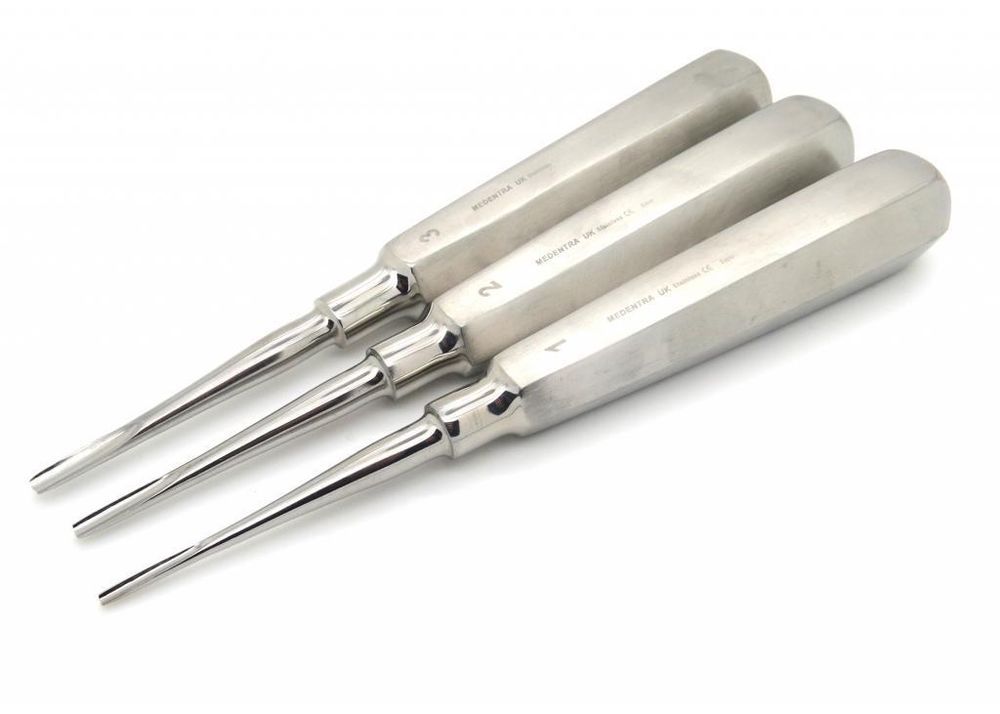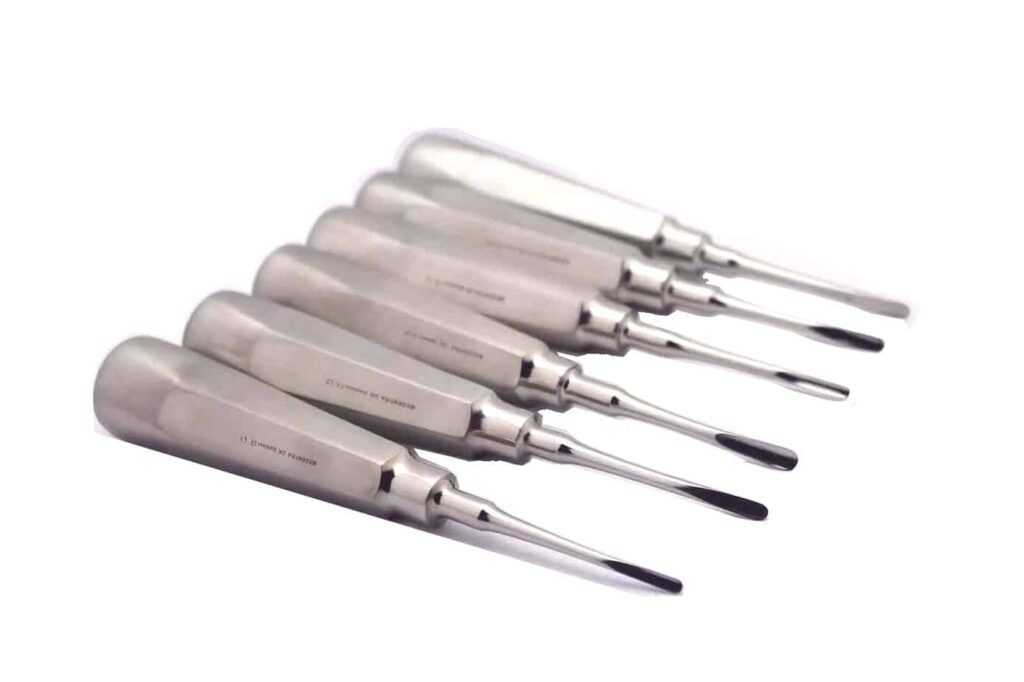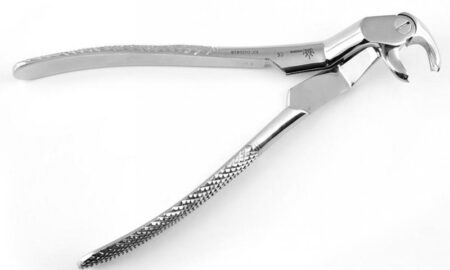What is a Dental Elevator?
It is a surgical instrument widely used in dentistry, especially in tooth extraction procedures. dental elevator It is designed to help separate the tooth from the surrounding bone and gum connective tissue. It is used during tooth extraction to make the extraction of the tooth easier and the extraction process less traumatic. The primary function of the elevator is to “lift” or “separate” the tooth from its socket.
This procedure is performed to loosen the connective tissues around the tooth and reduce the force required to extract the tooth. It is usually placed between the tooth root and bone next to the tooth to be extracted. Then, the physician gently lifts the tooth from its socket using the elevator principle. In tooth extraction, it allows the dentist to perform the extraction process in a more controlled and precise manner.
In Which Situations Is Dental Elevator Used?
It is widely used in dentistry, especially in certain situations. Chief among these is difficult tooth extractions. In particular, the root structure of the tooth is complex or fragile. Therefore, elevators help remove the tooth from its socket in a gentler and more controlled manner. Elevators also play an important role in removing teeth that are firmly attached to the bone around the tooth or are embedded.
Elevators are also frequently preferred for the extraction of molars, especially those located at the back of the mouth and are difficult to reach. Because extraction of these teeth is generally more difficult. Elevators are a great aid in gaining access to these teeth and removing them safely. Elevators are also used in case of tooth fractures. If part of the tooth is broken and the remaining part remains in the gum and jawbone, elevators are an effective tool in removing these parts.
Elevators are also useful in the extraction of teeth that have become loose due to periodontal disease. More complex surgery such as root end surgery dental elevator The use of elevators may also be seen during surgical procedures. In such cases, elevators are used to remove the tooth from its socket without damaging the tissues. In general, tooth extraction causes minimal damage to the tissues surrounding the tooth. Thus, it allows faster and safer shooting.
Dental Elevator Types

They are important tools that are frequently used in dentistry practice and come in various types. Each elevator type is designed according to the specific requirements of the tooth extraction process. This provides dentists with flexibility in different extraction scenarios.
Flat elevators are the most commonly used type of elevator. These devices are often used to widen the space between the tooth and surrounding tissues. Their simple design is especially ideal for straight and easily removable teeth.
Beam elevators are used to remove impacted or broken teeth. These elevators are designed to provide a more powerful and effective lifting action. Its thick handles and solid structure provide advantages in difficult shooting situations. Periosteal elevators are used to separate and lift the bone membrane surrounding the tooth. dental elevator is used. It is especially important in sensitive procedures such as implant surgery.
Available in various shapes and sizes, these elevators adapt to different anatomical structures. Warwick-James elevators are effective in narrow spaces. It is also an elevator that can reach difficult places. Tips with various angles make shooting in difficult areas easier. Apical elevators are used in root end extractions. It has a long and thin structure to reach the deep parts of the root. Ideal for gently lifting and removing the root.
Dental Elevator Prices

Dental elevator pricesvaries depending on many factors. These factors include brand, quality, material, design, variety and place of purchase. First of all, the brand is an important factor on its prices.
Products from well-known and respected dental instrument manufacturers use high quality materials and advanced designs. It may be more expensive for this. The quality of the material from which the elevators are produced is another factor that affects the price.
High quality materials such as stainless steel are longer lasting and durable. That's why it's usually sold at higher prices. Additionally, additional features such as special alloys or surface treatments can also increase the price. Design and variety also play a role in pricing. For example, specially designed or multifunctional elevators may be more expensive than standard models.
On the other hand, standard models are often more affordable because they are simple and functional. There are various factors that affect prices. These allow dentists to choose from options that suit the clinic's needs and budget. Considering the balance between quality and price, we have a suitable product for every occasion and budget. dental elevator can be found.





Leave a Reply